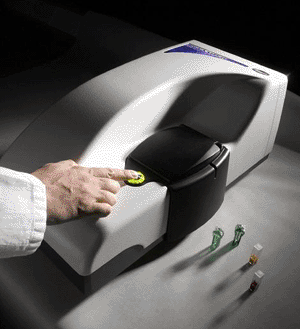New Instruments Permit Drug Developers to Characterize Polymer Solutions
By LabMedica International staff writers
Posted on 30 Aug 2011
Drug development laboratories have come to depend on advanced instrumentation that permits precise determination of polymer molecular weight distribution and other characteristics such as zeta potential.Posted on 30 Aug 2011
The drug development laboratory in the department of bioengineering at the University of Pittsburgh (PA, USA) is an example of such an institution. Among other projects, the investigators are synthesizing new polymers to control the release of growth factors that regulate cell activity and body function. Towards this end, they depend heavily on Malvern Instruments’ (Malvern, United Kingdom) Viscotek gel permeation system and Zetasizer Nano.

Image: The Zetasizer Nano (Photo courtesy of Malvern Instruments).
Gel Permeation Chromatography (GPC), also known as Size-Exclusion Chromatography (SEC), is a chromatographic technique that employs specialized columns to separate natural and synthetic polymers, biopolymers, proteins, or nanoparticles based on size. As the sample is separated and elutes from the column, it can be characterized by a single concentration detector or series of detectors. When the GPC/SEC separation is coupled with light scattering, viscometer, and concentration detectors together (triple detection), it will provide a distribution of absolute molecular weight, molecular size, and intrinsic viscosity as well as information on macromolecular structure, conformation aggregation and branching.
The Zetasizer Nano allows determination of other physical attributes of polymer solutions by measuring particle and molecular size from below a nanometer to several microns, zeta potential, electrophoretic mobility, and molecular weight.
“GPC is fundamental to our research,” said Hunghao Chu, a researcher in the bioengineering department at the University of Pittsburgh. “We have to fully understand our new polymers and GPC delivers absolute molecular weight measurement. We also need to know the polydispersity index of our samples to understand polymer homogeneity. When publishing data in peer reviewed journals it is very important to have confidence in results and to be able to validate them.”
“I am 100% satisfied with Malvern Instruments’ customer service,” said Hunghao Chu. “While many instruments on the market appear to provide similar standards of data, good customer service is a highly important distinction. Malvern Instruments stands out in its provision of support beyond initial purchase. This means that we can be confident in the long term functionality of any system we buy from them.”
Related Links:
University of Pittsburgh
Malvern Instruments













